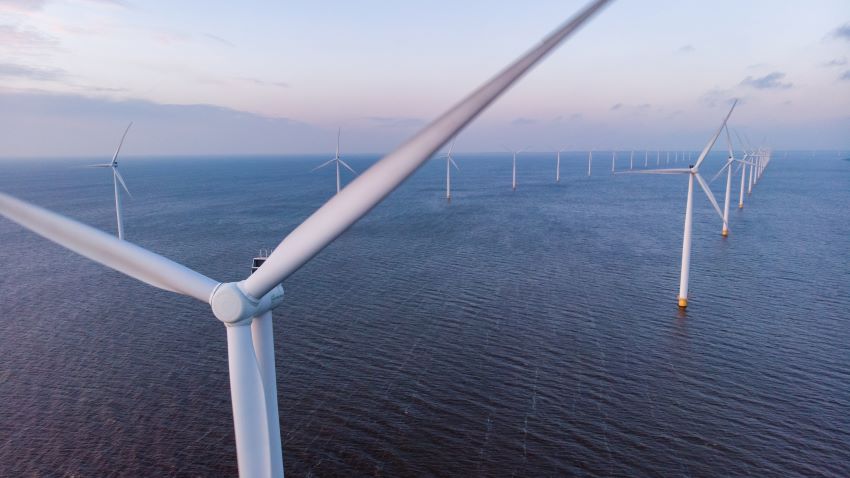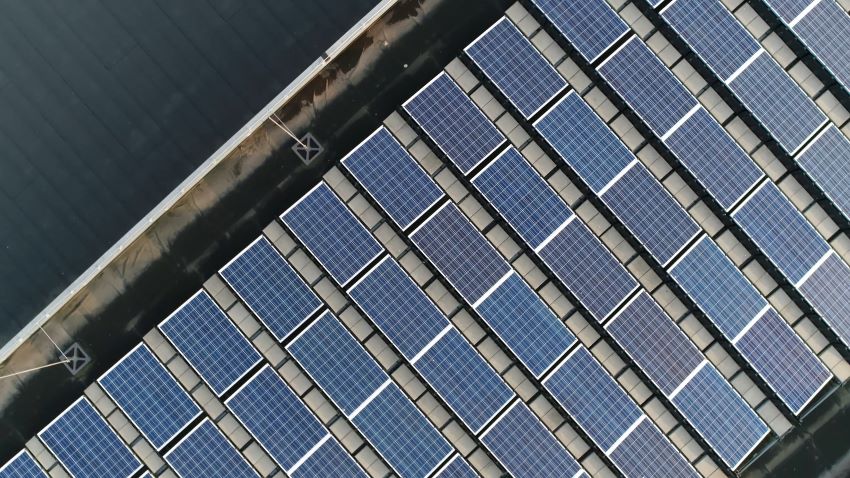


More than half the island's electricity needs could be generated by offshore wind, according to a Policy Letter published by the Committee for the Environment & Infrastructure.
The publication of E&I’s long-awaited Electricity Strategy also comes with a warning: Do nothing and pay the price. In a political climate where all efforts are going towards reducing costs wherever possible, the revelation that Guernsey’s status quo with electricity supply could end up costing the island £1,910 million by 2050 is sobering.
The Committee for the Environment & Infrastructure has today published its Electricity Strategy Policy Letter. The mammoth document lays out six different options for meeting Guernsey’s growing demand for electricity, while aligning with carbon neutrality targets set within the Energy Policy 2020-2050.
The Policy – which was agreed to in 2020 – encourages local, renewable energy generation while also establishing that the majority of the island’s power should come from renewable sources.
E&I isn’t asking for any concrete decisions - on windfarms, solar panels, or additional interconnectors - but simply for the States Assembly to agree to a high-level strategic direction. If this direction is agreed, the Committee will then undertake further work to develop detailed proposals for future energy generation.

Pictured: President of E&I, Deputy Lindsay de Sausmarez.
The Committee undertook significant consultation to help develop the Strategy, including with the Electricity Strategy Steering Group, the Energy Partnership and subject matter experts (Siemens and PwC). While the Committee isn’t asking the States to do anything, it will be asking the Assembly to agree to the following recommendations.
E&I has developed six supply ‘pathways’. Option A would be to retain the status quo, or essentially make no decision. This would force Guernsey Electricity to update its ageing thermal powerplant in a more costly manner.
Option B focuses on more independence from off-island sources of energy. Option C focuses entirely on renewables and option E includes a new interconnector with France, but with the addition of solar generation on island.
Option F would require strategic investment from the government in ‘innovative technologies’ that could eventually support future generation.
E&I’s preferred option is option D – dual interconnectors with offshore wind. This supply pathway includes a 100MW direct cable to France, in addition to the current cable that already connects Guernsey to France via Jersey. It also includes the proposal for a ‘fixed-bottom’ offshore wind farm that could supply Guernsey with 65MW of energy, and an allowance for solar panel generation as well.
Any power generated through offshore wind turbines could be through the island's own farm, or in conjunction with other jurisdictions as a larger group development.

This option would provide Guernsey with 46-55% of its power through wind, 37-43% through imported electricity and 8-10% through solar generation. Some minor maintenance will be required on GEL’s thermal power station so it could be operated as a back-up, however it's hoped the powerplant will be used infrequently.
The President of E&I, Deputy Lindsay de Sausmarez, said: “This is a more affordable option than continuing with how we currently generate electricity and will also provide us with a more secure supply, which over time will give us greater access to locally-generated renewable energy, and improved energy infrastructure.”
The total cost of option D is £1,730m of spend up until 2050. This is split into £630m in initial capital expenditure and £1,100m in operational expenditure. In comparison, sticking to the status quo is likely to cost £1,910m.
It’s important to note that these costs are indicative only at the moment and will become clearer through further work if and when the Policy Letter is agreed to. Additionally, these estimates do not distinguish between government or GEL spend, or indeed any other private companies involved in any future development.
E&I has also proposed that GEL remains the island’s sole retail supplier, as the market on-island has been deemed to be too sub-scale to support competition. It means GEL will continue to supply commercial and public customers in the same way it always has, but the source of that electricity will change.

Pictured: E&I's proposals also allow for the generation of power through solar panels.
To give reassurance to new companies who could potentially start supplying the island with alternative forms of power, E&I has proposed that GEL undertake an ‘account unbundling’ exercise. This would force GEL to separate its accounts and make clear the costs and revenues it derives from certain sectors of the business.
This will require a new regulatory framework to be developed and E&I is proposing that the Committee for Economic Development should bring back proposals for this before the end of 2024.
Deputy de Sausmarez is meeting with Express tomorrow for an in-depth podcast on the Policy Letter and Guernsey’s move towards an increasingly ‘electric’ future.
Comments
Comments on this story express the views of the commentator only, not Bailiwick Publishing. We are unable to guarantee the accuracy of any of those comments.